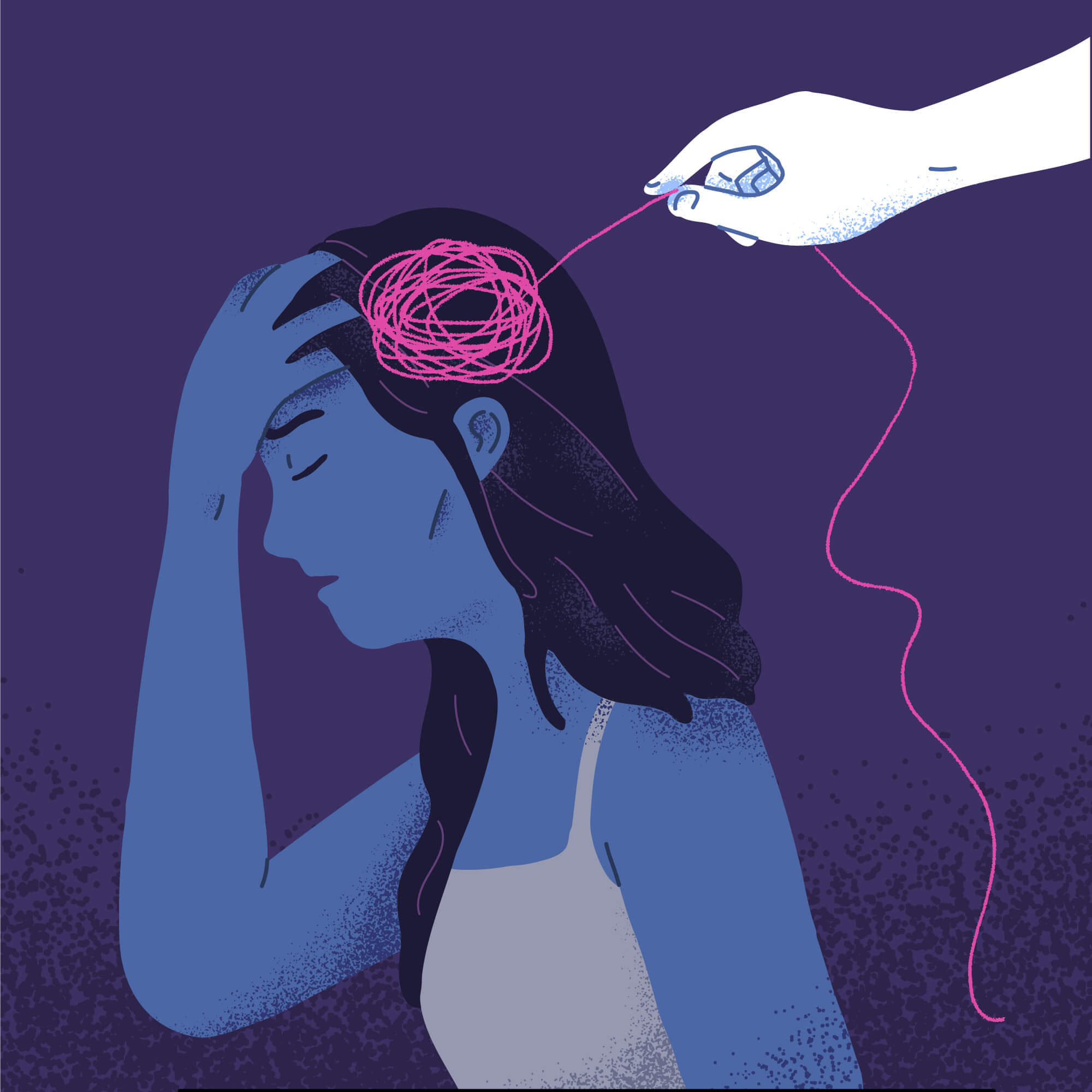There is a silent calculus embedded in every human rights complaint: how much of your energy, your time, your composure, and your life force are you willing to lose in order to gain a symbolic victory that cannot feed your children or restore your nervous system?
For those of us who have faced institutional harm—particularly disabled mothers, racialised families, and those navigating both poverty and professionalism—the question is whether we can survive the pursuit of accountability.
In British Columbia, the Human Rights Tribunal offers a narrow, administratively structured avenue for naming discrimination. Even in the best-case scenario—when the tribunal finds in your favour, when you win—the financial compensation rarely exceeds $35,000. Most cases land closer to $15,000 to $20,000. In rare, egregious cases involving sexual misconduct or racial abuse with career-ending consequences, awards may reach $50,000. These are the outliers. They don’t represent the subtle grinding harm of debility that many of us are experiencing.
The norm is a series of exhausting procedural steps, followed by a modest acknowledgement, and perhaps, if you are very lucky, an apology that arrives too late to matter. And along the way you will experience a series of disappointments around timeline, expectations, and emotional labour and need to crush your testimony into something that they will deem acceptable.
For families raising disabled children, especially those who are themselves disabled or navigating multiple marginalisations, the cost of advocacy is measured in sleep lost, wages forfeited, therapy postponed, careers derailed, and years spent managing the psychic fallout of bureaucratic violence. Yet the Tribunal, and the systems that surround it, treat harm as discrete, containable, and resolvable through paperwork. Like the pain and requirement for justice cannot last longer than a year. They erase the blood cost.
-
The unseen wounds of advocacy: caregiver burnout, moral injury, and embodied grief
Caregiver burnout in BC schools reflects moral injury and systemic betrayal, as mothers fight exclusion and harm while advocating for disabled children.
The system disincentivises the resourced
One of the least-discussed dynamics of the tribunal system is how effectively it disincentivizes those with economic, professional, or social capital from pursuing justice. People with legal training, people with six-figure salaries, people who could otherwise out-earn the impact of trauma—they do the math. They weigh the cost of two years of litigation, emotional exposure, retaliation risk, and lost productivity, and they decide it would be more rational to move on. And so they do.
They hire lawyers who write letters so sharp and legally precise that schools capitulate before the first meeting.They enroll their children in private institutions where accommodations are viewed as premium services rather than begrudged concessions. They purchase tutoring, therapy, and specialized programming that transforms educational barriers into manageable inconveniences. They leverage professional networks, threaten media exposure, or simply relocate to districts with better reputations. Their departure from the public system is swift, strategic, and largely invisible.
What this means in practice is that the tribunal disproportionately filters out complaints from people who could afford to bring the system into greater scrutiny—people with documentation skills, analytical frameworks, social reach, and strategic clarity. The very people who could hold public institutions to account are the ones most likely to walk away. Not because the harm was minor, but because the return on investment is insulting, and because they have alternatives that desperate families do not.
The result is a tribunal system that is simultaneously overburdened with desperate cases and under-scrutinized by those who know how to publicise its failures. It is a system that punishes those who stay, and quietly rewards those who leave.
Household income distribution: the invisible filter
Here is a table comparing the income distribution of BC Human Rights Tribunal complainants to the general population of BC economic families.
| Income Bracket (After Tax) | Complainants (%) | BC Families (%) |
|---|---|---|
| Under $20,000 | 22 | 2 |
| $20,000 – $39,999 | 24 | 8 |
| $40,000 – $59,999 | 19 | 9 |
| $60,000 – $79,999 | 13 | 13 |
| $80,000 – $99,999 | 7 | 13 |
| $100,000 or more | 16 | 55 |
This data reveals a system functioning exactly as designed: to exhaust the desperate while allowing the resourced to exit quietly. Lower-income families are vastly overrepresented in complaints (46% earn under $40,000, compared to 10% of BC families), while higher-income families are dramatically underrepresented (only 16% earn over $100,000, compared to 55% of BC families).
What this table reveals—beneath the surface of numbers—is a silent filtration system at work. Autism, ADHD, and other forms of neurodivergence do not discriminate by class; in fact, research shows that children in higher-income, professionally educated families are sometimes more likely to receive early diagnosis due to better access to specialists, greater health literacy, and the capacity to challenge dismissive clinicians. These families often recognise discrimination early, document it thoroughly, and understand the legal landscape well enough to pursue a complaint. And yet they rarely do.
Instead, they deploy their resources strategically and immediately. When a school fails their child, they don’t file a human rights complaint that might yield $25,000 in three years. They hire an educational advocate for $200 an hour who resolves the issue in three meetings. They don’t endure years of retaliation and procedural delays. They write a cheque, make a phone call, or leverage a relationship, and the problem disappears.
When the remedy is meager, the timeline indefinite, and the emotional burden immense, families with resources choose efficiency over justice. They double down on private support, pivot to career recovery, or quietly endure. The result is a tribunal system shaped not by the full spectrum of who is harmed, but by those who have the least ability to walk away—and the most to lose if they stay silent.
-
Epistemic silencing of disabled children’s primary caregivers
Epistemic silencing in BC schools discredits mothers’ knowledge, reframes advocacy as aggression, and erases disabled children’s pain, leaving families punished for truth.
The scapegoating mechanism: economic theory in practice
This filtering effect creates the perfect conditions for what economists J. Shahar Dillbary and Thomas J. Miceli describe in Of Sinners and Scapegoats: The Economics of Collective Punishment. Their model explains why institutions often punish groups rather than identify individual wrongdoers: when detection costs are high and deterrence is the goal, punishing the innocent becomes not just acceptable, but optimal.
In the context of human rights complaints, the “detection cost” is the institutional effort required to address systemic discrimination. It is expensive—in time, resources, policy changes, staff training, and admissions of wrongdoing—to actually solve the problems that generate complaints. It is far cheaper to let desperate families exhaust themselves in a bureaucratic maze while resourced families exit the system entirely.
The families who remain—those with the least economic mobility, the fewest alternatives, the most precarious employment—become the scapegoats for institutional failures they did not create. They absorb the full weight of systemic harm while those with authority to demand change remove themselves from the battlefield entirely. Their suffering serves a function: it allows the system to appear responsive (look, we have a complaints process!) while ensuring that the people using it lack the social capital to demand meaningful reform.
This is why the tribunal system feels designed to exhaust rather than resolve. Because it is. The people with enough authority, professional networks, and social legibility to force institutional change have been systematically priced out of the process. What remains is a population of complainants who are both most harmed by discrimination and least equipped to challenge the inadequacy of the remedies offered.
The cruel efficiency of this design cannot be overstated. By making justice emotionally and financially prohibitive for those with resources, the system ensures that those who remain lack the collective power to demand that the process itself be fixed. They are too busy drowning to organise a better boat.
-
Collective punishment in schools: How humiliation undermines emotional safety and learning
In classrooms around the world, students are sometimes punished for the misbehavior of others. One student breaks a rule, and the entire class loses a privilege. This practice – known as collective punishment – persists even though it is broadly recognised as unjust. In fact, collective punishment is explicitly banned under Article 33 of the Geneva Conventions […]
The dangerous margins: where affluence meets desperation
Yet the most revealing cases exist at the margins—where affluence intersects with desperation in ways that expose the system’s true design. These are families who possess significant professional credentials, social capital, and theoretical resources, but find themselves unable to deploy these advantages due to circumstances that intensify both their children’s needs and their own vulnerability.
Professional mothers with multiples represent this dangerous intersection perfectly. I know multiple professional women raising multiples that have suffered high conflict relationships and are now resource poor, but used to a level of affluence who are struggling in the school system. These women have the expertise to recognise discrimination, the language to name it precisely, and the professional networks that should provide leverage. Yet they become some of the most intensely targeted families in the system.
The mathematics of institutional scarcity create a perfect storm. Schools operating on rationed resources view families with multiples as inherently excessive because meeting the legal obligations to several children from one family exposes the system’s fundamental inadequacy. Rather than acknowledge insufficient capacity, institutions reframe these families as uniquely demanding, unreasonable, or impossible to satisfy. See The goodwill ledger: how schools calculate inclusion allotments.
-
Double the love, double the discrimination
Public education systems punish families of multiples by forcing impossible choices between their children—often withholding support until one child reaches visible crisis, while the other’s suffering is quietly disregarded. The statistical reality schools refuse to prepare for Schools are rarely prepared for what families of multiples often bring to the classroom: These families often arrive […]
Meanwhile, the caregiving load exponentially reduces these mothers’ capacity to fight on multiple fronts. Unlike wealthy families with single children who can hire advocates while maintaining career momentum, professional mothers of multiples must divide their energy across several children’s needs simultaneously. They often cannot afford to exit the system—their children’s needs are too complex for private solutions—but they also cannot sustain the advocacy battle at the pace required for multiple children.
This creates the perfect conditions for institutional scapegoating. These families are too knowledgeable to be dismissed as uninformed, too professionally credentialed to be ignored, yet too overwhelmed to organise sustained resistance. Their expertise becomes weaponised against them—evidence not of their right to be heard, but of their supposed aggression or over-involvement.
The dangerous margin cases
While families who exit quietly leave no public trace and desperate families with few resources are dismissed as outliers who “just don’t understand how schools work,” human rights professionals who document discrimination, PhD candidates who map procedural violations, and mothers with social justice expertise who name systemic failures in precise legal language create a fundamentally different threat—one whose professional credibility makes their testimony undismissable.
This triggers swift institutional retaliation: these families must be discredited before their analysis gains traction; their expertise reframed as personal instability; their advocacy pathologised as “helicopter parenting”—while their legitimate complaints disappear under procedural delays and bureaucratic exhaustion designed to send a clear message to other professionals that expertise will not protect them, credentials will be weaponized against them, and legal knowledge will be reframed as aggression.
The System’s vulnerability
These cases reveal the system’s greatest vulnerability: when professional mothers with deep expertise refuse to be silenced, their testimony carries institutional weight that desperate families’ complaints do not, connecting individual harm to systemic patterns in ways that threaten the institution’s ability to treat each case as isolated—creating cracks in the institutional facade that cannot be easily dismissed.
The system’s desperate attempts at discreditation—through retaliation, procedural harassment, and character assassination—often become the very evidence exposing institutional bad faith; when schools target UN human rights professionals with particular intensity, they reveal that the issue was never about resources but always about maintaining power and avoiding accountability.
The cruel design
The tribunal system feels designed to exhaust rather than resolve because it systematically prices out those with enough authority and social networks to force institutional change—leaving a population of complainants who are simultaneously most harmed by discrimination and least equipped to challenge inadequate remedies.
By making justice financially and emotionally prohibitive for those with resources, the system ensures that those who remain lack the collective power to demand systemic reform: they are too busy drowning to organize a better boat, trapped in a cruel efficiency that cannot be overstated.
Feminised exhaustion and the psychic wage of silence
For caregivers—particularly disabled mothers, queer mothers, neurodivergent mothers, and racialised mothers—the disincentive is not just about money. It is about the feminized expectation of composure. To pursue a human rights complaint while parenting disabled children is to accept a second job—one that pays nothing, demands everything, and offers only the faint hope of justice.
The work is relentless and gendered. Gathering documentation while managing meltdowns. Revisiting harm while coordinating therapies. Reliving meetings where our concerns were dismissed while researching legal precedents late into the night. Crafting legally sound narratives for bureaucrats who will never understand our lives while maintaining the emotional availability our traumatised children require. And at every step, we are told, implicitly or explicitly, that our tone will determine our credibility. That our emotion will be read as exaggeration. That our persistence will be coded as instability. That our grief must be converted into neutral, regulated prose or it will be disqualified from legitimacy.
Meanwhile, fathers with similar resources hire lawyers and move on. They do not spend years parsing the subtle differences between procedural fairness violations and substantive discrimination. They do not learn the bureaucratic language required to make institutions listen. They write checks or make strategic exits, leaving the emotional labour of systemic change to mothers who cannot afford to leave.
So we modulate. We perform composure. We redraft our rage. And in doing so, we bleed slowly, becoming the perfect complainants for a system designed to contain rather than resolve harm.
-
Poise as pedagogy
There is a cost to composure that institutions never count. When schools reward mothers for staying calm in the face of harm, they turn grace into a gatekeeping tool and punish those who dare to grieve out loud.
Loss that cannot be repaid
For those of us with professional careers, the financial harm compounds exponentially. I have watched people I trained alongside become CEOs and directors. I earn a fraction of their wages, despite having comparable expertise and trajectory—because I have spent the past decade raising disabled children in a hostile education system. Burning my evenings and weekends on advocacy emails. Organising meetings with school staff who smile and nod and change nothing. Taking children to appointments that schools required but refuse to attend. Launching appeals that consume months of unpaid labour.
This is not a complaint about parenting. It is a naming of structural harm. When a public system fails your child, and you are the one who must absorb that failure—logistically, emotionally, financially—it alters your life course permanently. You lose the promotions you could not apply for because you were in IEP meetings. You lose the billable hours you could not log because you were researching educational law. You lose the networking opportunities that happened during school hours. You lose the mental bandwidth for strategic career planning because every cognitive resource is devoted to crisis management.
The professional cost extends beyond immediate earnings. Your reputation becomes entangled with your child’s needs. Colleagues begin to see you as “difficult” or “distracted.” Your expertise becomes secondary to your role as “that parent who always has issues with the school.” Your professional identity erodes as your advocacy identity expands, until you are no longer seen as capable of anything beyond managing your family’s crisis.
And when the tribunal system then tells you that $25,000 is the value of your lost career trajectory, your compromised health, your fractured relationships, and your child’s ongoing trauma, it is a final violence. The award barely covers a year of private therapy for the harm that will ripple through your family for decades.
If the tribunal were honest, it would say: You can either keep your career or chase justice. You may not have both. The system relies on this impossible choice to ensure that those who pursue complaints are too depleted to demand that the process itself be reformed.
-
Nobody is going to thank you
Nobody tells you that you can pour every last scrap of yourself into advocacy and still feel your bond with your child begin to strain. There is a familiar story passed among parents—one in which you step in, do a little advocacy, and…
Refusing erasure, even when the cost is high
And yet some of us still file. Not because we believe the system will fix what it broke. But because we refuse to let them write us out of the story. We file so that the record exists. So that our children, one day, will know that we did not stay quiet. So that future families might find our names in the database and realise they were not alone.
We file because silence, too, has been weaponised against us. Every family that exits quietly, every complaint that is never filed, every accommodation that is purchased privately rather than demanded publicly, becomes evidence that the system works. Our refusal to disappear disrupts their narrative of institutional benevolence.
This is not healing. It is naming. It is testimony. It is refusal. And perhaps one day, when enough of us have bled on the record, when the patterns become undeniable, when the cost-benefit analysis finally shifts, the awards will match the injury. Perhaps one day the process will move at the speed of harm rather than the speed of institutional self-preservation.
But until then, we will continue to speak. Even when we are exhausted. Even when we are gaslit. Even when the cost of justice is everything we have left to give. Because we understand what the system is designed to hide: that our individual cases are not isolated failures, but predictable outcomes of a structure that profits from our exhaustion.
And because we know that every complaint we file, every meeting we attend, every dollar we cannot afford to spend on lawyers, is both a wound and a weapon. A record of harm and a refusal to let that harm disappear into institutional amnesia.
Because silence, too, is expensive. And we are done paying that price alone.
-
The path to justice: legal versus public record
The courts may offer compensation, but rarely truth. The legal path demands silence in exchange for settlement. The public path asks you to speak while you’re still bleeding. Neither is easy. But only one builds a record that helps the next family survive.














